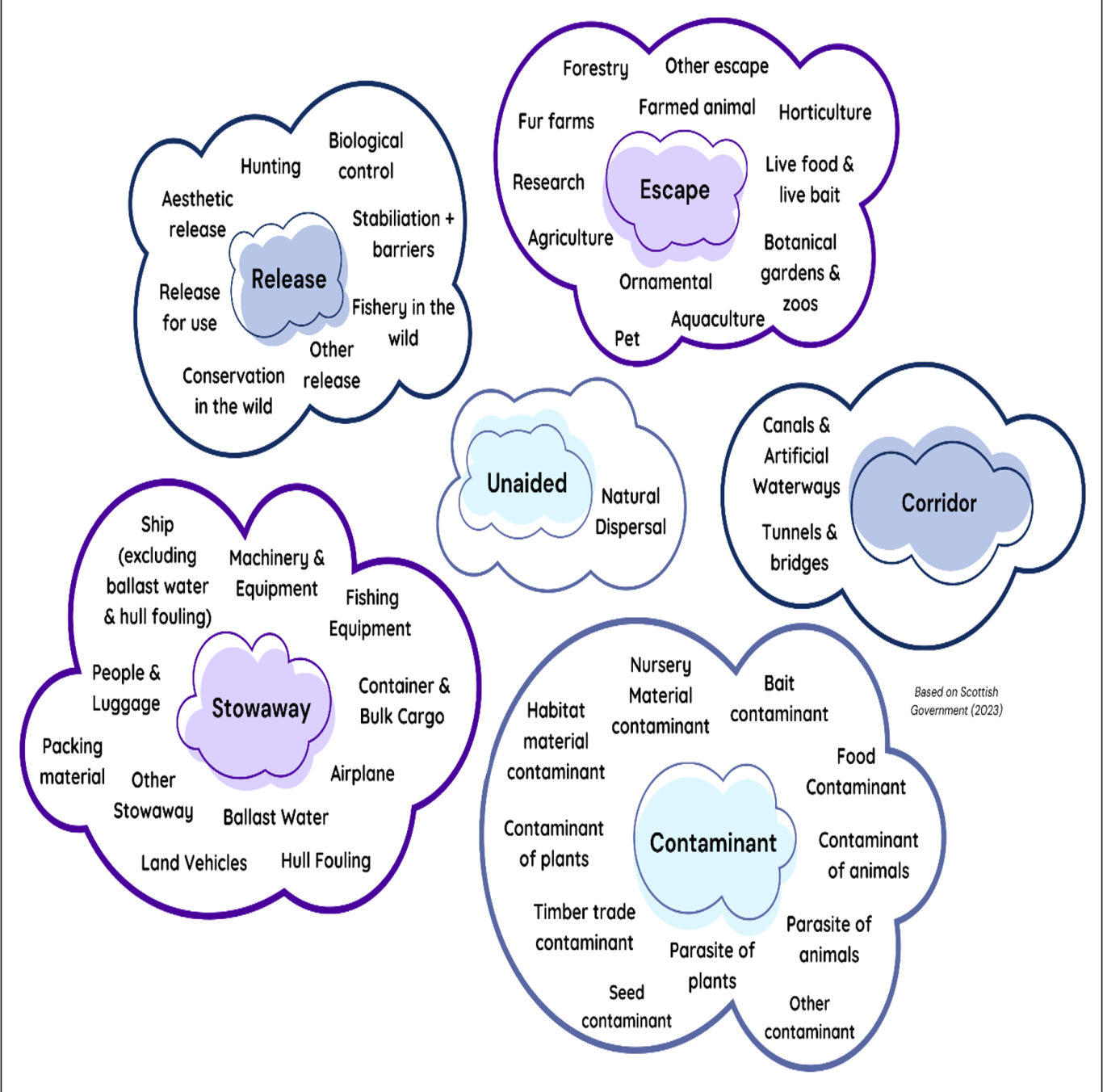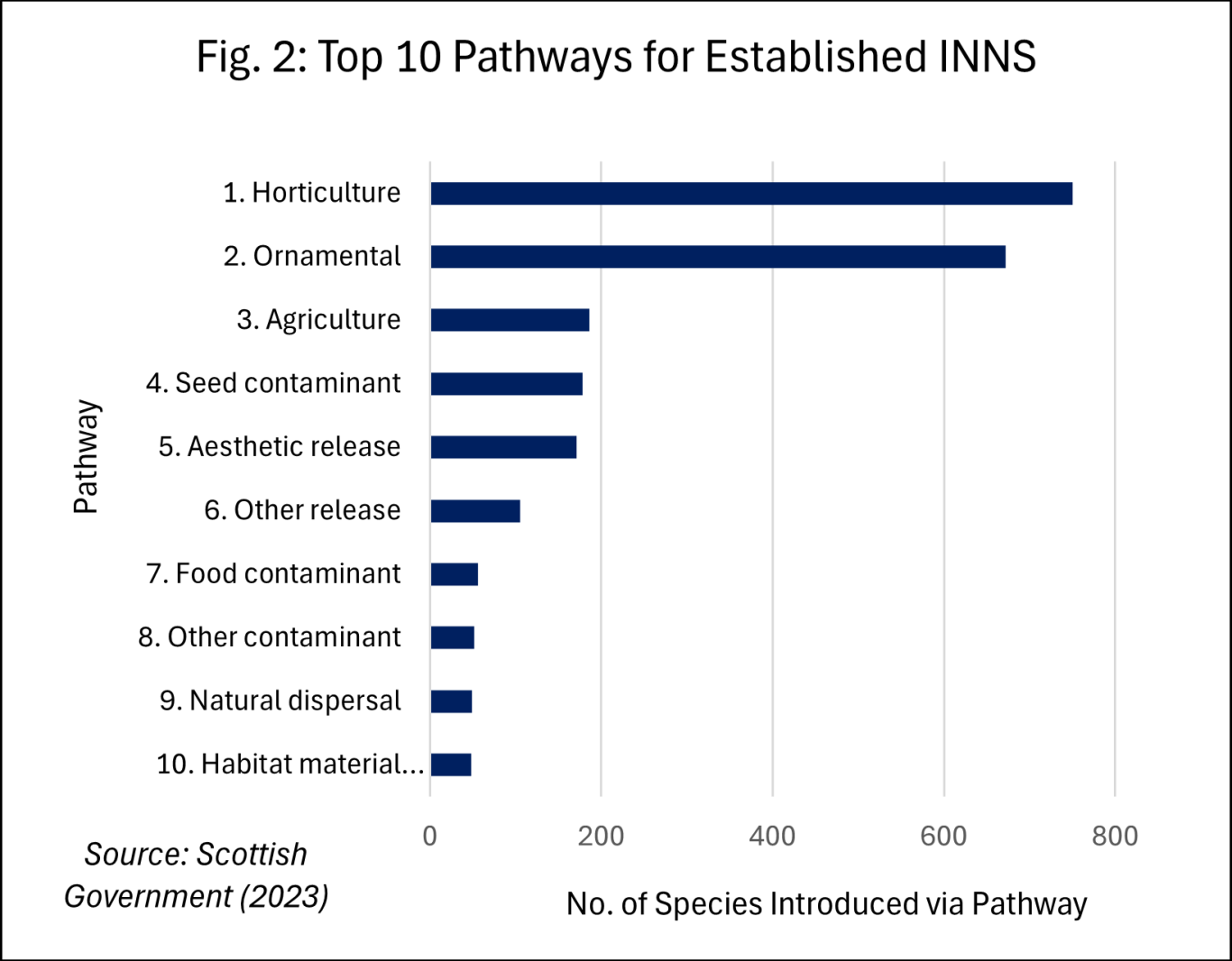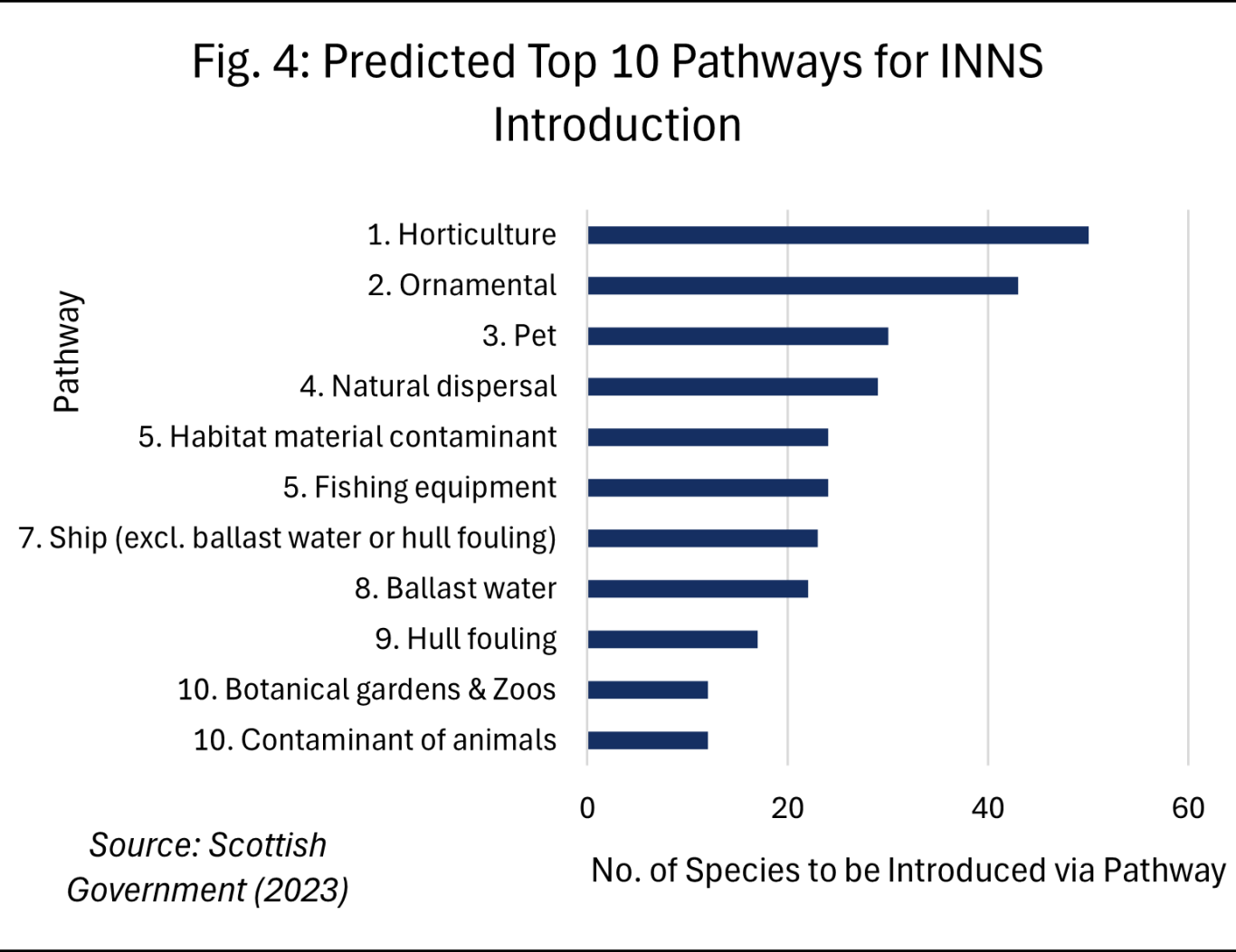INNS Pathways
Key Findings
Scotland is the established home of atleast 1096 non-native species (Scottish Government, 2023), and with climate change warming the land, oceans and rivers, the country is becoming ever more appealing to INNS. In response to this impending threat, the Scottish Government recently conducted a horizon scanning study to identify the pathways by which harmul INNS reach Scotland. As visualised in figure 1, their findings revealed an extensive list of potential pathways, classifying atleast 45 distinct routes across 6 separate categories (Scottish Government, 2023).
Historical INNS Pathways:
The rate at which INNS appear in Scotland has been increasing in recent years, with nearly half of established non-native species having appeared since 1950 (Scottish Government, 2023). In the past, INNS pathways were dominated by the Horticulture and Ornamental escape pathways, as shown in figures 2 & 3 (Scottish Government, 2023). Consequently, these pathways have been major contributors to biodiversity decline, with horticulture alone responsible for 2/5th of the UK’s most damaging INNS (NNSS, 2022).
The horticulture pathway relates to the trade and keeping of plants, while the ornamental pathway can involve any species kept for interest, commonly plants. INN plant species can be some of the most complex to control due to their various methods of reproduction. A well-known example is of course the infamous Japanese Knotweed, established in the UK since 1886 via ornamental introduction (NNSS, 2016). This species can spread through offcuts of parent plants if not disposed of properly and is only removable through prolonged herbicide treatment - please see our Japanese Knotweed page for more information.
Future INNS Pathways:
Looking now to the future, the Scottish Government (2023) identifies 171 species to have a noteworthy risk of becoming invasive and damaging biodiversity. They predict the pathways of greatest risk to remain as Horticulture and Ornamental escape, as shown in figure 4. The Pet pathways is ranked 3rd in future INNS pathways, marking a significant jump up from its historical position where it did not feature in the top 10 (fig. 2 & 3).
In a similar vain to ornamental introductions, the pet pathway involves the escape of any animal species kept by humans, including farm animals, traditional pets, animals released for sports hunting, and many others (NNSS, 2024). The pathway’s heightened modern risk is partly the result of the recent drastic increase in ‘exotic pets’ observed throughout the UK over the last half decade (Born Free and RSPCA, 2021). More than 2700 ‘dangerous wild animals’ are thought to live legally as pets in the UK, with examples in the Aberdeen / Aberdeenshire region including ostriches and highly venomous snakes (Born Free, 2023). A lack of regulation has allowed legal ownership of exotic pets to skyrocket, nevermind the numbers that may be kept illegally (Born Free and RSPCA, 2021). Should these animals escape into the wild, some pose a risk of becoming invasive.
To learn more about the variety of invasive species already present in Scotland, and the efforts being taken to manage the issue, please see our ‘INNS’ section.

Fig. 1: All potential pathways for the spread of INNS, as listed by the Scottish Government (2023)

Figure 2: Top 10 most common pathways into Scotland for established INNS. Data from Scottish Government (2023)

Figure 3: Top 10 most common pathways into Scotland for established INNS since 1950. Data from Scottish Government (2023)

Figure 4: Predicted top 10 most common pathways for future INNS arriving in Scotland. Data from Scottish Government (2023)
Notes
None
Linked Information Sheets
Key sources of Information
Born Free (2023) Dangerous Wild Animals: Is There One Living Near You?
Born Free and RSPCA (2021) The Exotic Pet-Demic: UK’s Ticking Timebomb Exposed
NNSS (2016) Japanese Knotweed – Fallopia japonica
NNSS (2022) Horticulture PAP for Great Britain
NNSS (2024) Pet PAP for Great Britain
Scottish Government (2023) Spread of invasive species into Scotland: study
Reviewed on/by
20/01/2025 Cathryn Lovie
27/01/2025 Mariia Topol
Status
First Draft
To report errors, highlight new data, or discuss alternative interpretations, please complete the form below and we will aim to respond to you within 28 days
Contact us
Telephone: 07971149117
E-mail: ian.hay@stateofthecoast.scot
We need your consent to load the translations
We use a third-party service to translate the website content that may collect data about your activity. Please review the details in the privacy policy and accept the service to view the translations.

